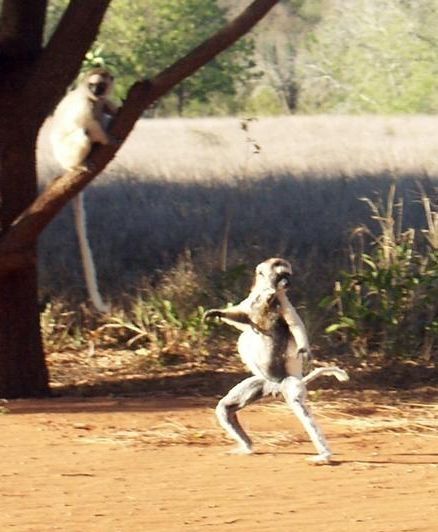|
|
Dancing Lemurs
|
The classification of lemurs within the suborder Strepsirrhini is equally controversial, although the most experts agree on the same phylogenetic tree. In one taxonomy published by Colin Groves, the Aye-aye was placed in its own infraorder, Chiromyiformes, while the rest of the lemurs were placed in Lemuriformes. In another taxonomy, Lemuriformes contains all living strepsirrhines in two superfamilies, Lemuroidea for all lemurs and Lorisoidea for lorises and galagos.
Lemur taxonomy has changed significantly since the first taxonomic classification of lemurs by Carl Linnaeus in 1758. One of the greatest challenges has been the classification of the Aye-aye, which has been a topic of debate up until very recently. Until Richard Owen published a definitive anatomical study in 1866, early naturalists were uncertain whether the Aye-aye (genus Daubentonia) was a primate, rodent, or marsupial. However, the placement of the Aye-aye within the order Primates remained problematic until very recently. Based on its anatomy, researchers have found support for classifying the genus Daubentonia as a specialized indriid, a sister group to all strepsirrhines, and as an indeterminate taxon within the order Primates. Molecular tests have now shown Daubentoniidae is basal to all Lemuriformes, and in 2008, Russell Mittermeier, Colin Groves, and others ignored addressing higher-level taxonomy by defining lemurs as monophyletic and containing five living families, including Daubentoniidae.
Relationships among lemur families have also proven to be problematic and have yet to be definitively resolved. To further complicate the issue, several Paleogene fossil primates from outside Madagascar, such as Bugtilemur, have been classified as lemurs. However, scientific consensus does not accept these assignments based on genetic evidence, and therefore it is generally accepted that the Malagasy primates are monophyletic. Another area of contention is the relationship between the sportive lemurs and the extinct koala lemurs (Megaladapidae). Formerly grouped in the same family due to similarities in dentition, they are no longer considered to be closely related due to genetic studies.
|
|









